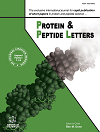- Home
- A-Z Publications
- Protein and Peptide Letters
- Previous Issues
- Volume 23, Issue 12, 2016
Protein and Peptide Letters - Volume 23, Issue 12, 2016
Volume 23, Issue 12, 2016
-
-
Hemopressin Peptides as Modulators of the Endocannabinoid System and their Potential Applications as Therapeutic Tools
More LessThe endocannabinoid system (ECS) is activated when natural arachidonic acid derivatives (endogenous cannabinoids or endocannabinoids) bind as lipophilic messengers to cannabinoid receptors CB1 and CB2. The ECS comprises many hydrolytic enzymes responsible for the endocannabinoids cleavage. These hydrolases, such as fatty acid amide hydrolase (FAAH) and monoacylglyceride lipase (MAGL), are possible therapeutic t Read More
-
-
-
Fish Hydrolysates: A Regulatory Perspective of Bioactive Peptides
More LessFor the first time introduced on the Japanese market, bioactive fish hydrolysates are now available all over the world as food supplements, functional food ingredients or nutricosmeceuticals. They are generally produced from low value fish waste, an almost inexhaustible source of raw material, and are sold as high value products, making them economically interesting from a manufacturer’s view point. Most of these pr Read More
-
-
-
Proline-rich Antimicrobial Peptides Optimized for Binding to Escherichia coli Chaperone DnaK
More LessThe bacterial protein DnaK promotes folding of newly synthesized polypeptide chains, refolding of misfolded proteins, and protein trafficking. Assisted refolding is especially important under stress conditions induced by antibiotic therapies reducing the desired bactericidal effects. DnaK is supposedly targeted by proline-rich antimicrobial peptides (PrAMPs), but Escherichia coli ΔdnaK mutants and wild type strains are equall Read More
-
-
-
α-Lactalbumin: Of Camels and Cows
More LessSince camel milk has been attributed with various medicinal properties not found in bovine milk, we are systematically examining the differences between different proteins in bovine and camel milk. The purpose of this study is to investigate the structural differences between the bovine and camel α- lactalbumins. α-Lactalbumin is a highly abundant protein present in the milk of all mammalian species. Here we found several Read More
-
-
-
OPMSP: A Computational Method Integrating Protein Interaction and Sequence Information for the Identification of Novel Putative Oncogenes
More LessAuthors: Lei Chen, Baoman Wang, ShaoPeng Wang, Jing Yang, Jerry Hu, ZhiQun Xie, Yuwei Wang, Tao Huang and Yu-Dong CaiOncogenes are genes that have the potential to cause cancer. Oncogene research can provide insight into the occurrence and development of cancer, thereby helping to prevent cancer and to design effective treatments. This study proposes a network method called the oncogene prediction method based on shortest path algorithm (OPMSP) for the identification of novel oncogenes in a large protein network built u Read More
-
-
-
MMP14 Regulates VEGFR3 Expression on Corneal Epithelial Cells
More LessAuthors: Kyu-Yeon Han, Jin-Hong Chang and Dimitri T. AzarVascular endothelial growth factor receptor 3 (VEGFR3) regulates the growth and differentiation of blood and lymphatic vessels. To determine whether matrix metalloproteinase 14 (MMP14) modulates VEGFR3 expression in the corneal epithelium to influence the avascularity of the cornea, VEGFR3 expression was compared between wild-type and MMP14-deficient (MMP14 Δexon4) corneal epithelial cells. Western blot analys Read More
-
-
-
Discovery and Biochemical Characterization of the UDP-Xylose Biosynthesis Pathway in Sphaerobacter thermophilus
More LessAuthors: Bin Gu, Pedro Laborda, Shuang Wei, Xu-Chu Duan, Hui-Bo Song, Li Liu and Josef VoglmeirThe biosynthesis of UDP-xylose requires the stepwise oxidation/ decarboxylation of UDP-glucose, which is catalyzed by the enzymes UDPglucuronic acid dehydrogenase (UGD) and UDP-xylose synthase (UXS). UDPxylose biosynthesis is ubiquitous in animals and plants. However, only a few UGD and UXS isoforms of bacterial origin have thus far been biochemically characterized. Sphaerobacter thermophilus DSM 20745 is a bacte Read More
-
-
-
Acid-Induced Unfolding of Champedak Galactose-Binding Lectin
More LessAuthors: Nurul Iman A. Kameel, Adawiyah S. Shuib and Saad TayyabAcid denaturation of champedak galactose-binding (CGB) lectin was studied in the pH range, 7.0−1.0 using intrinsic fluorescence and ANS fluorescence measurements. The lectin remained stable up to pH 5.0 and showed local disordering in the vicinity of the protein fluorophores within the pH range, 5.0−3.5. Decrease in the pH from pH 3.5 to pH 2.5 led to structural transition, marked by the decrease in the intrinsic fluo Read More
-
-
-
Biophysical Characterization of Alanine Aminotransferase from Trypanosoma cruzi
More LessAminotransferases are an important group of enzymes that catalyze the transfer of an amino group of an amino acid into a keto acid. Alanine aminotransferase from Trypanosoma cruzi (TcALAT) was cloned, overexpressed and purified. Far-UV Circular Dichroism (CD), Dynamic Light Scattering (DLS), Analytical Size Exclusion Chromatography (aSEC) and Small Angle X-ray Scattering (SAXS) provide data concerning TcA Read More
-
-
-
Manipulation of Intracellular pH in Cancer Cells by NHE1 Inhibitors
More LessAuthors: Francesca Aredia and Anna I. ScovassiCancer cells are characterized by a peculiar pH condition, being the extracellular compartment acidic and the intracellular one neutral or basic, i.e. the opposite of what happens in normal cells. The reversal of the pH contributes to cancer cell proliferation and drug resistance. Among the different enzymes regulating pH gradient, proton transporters Na+/H+ exchangers (NHEs) are considered as suitable targets for drugs t Read More
-
Volumes & issues
-
Volume 32 (2025)
-
Volume 31 (2024)
-
Volume 30 (2023)
-
Volume 29 (2022)
-
Volume 28 (2021)
-
Volume 27 (2020)
-
Volume 26 (2019)
-
Volume 25 (2018)
-
Volume 24 (2017)
-
Volume 23 (2016)
-
Volume 22 (2015)
-
Volume 21 (2014)
-
Volume 20 (2013)
-
Volume 19 (2012)
-
Volume 18 (2011)
-
Volume 17 (2010)
-
Volume 16 (2009)
-
Volume 15 (2008)
-
Volume 14 (2007)
-
Volume 13 (2006)
-
Volume 12 (2005)
-
Volume 11 (2004)
-
Volume 10 (2003)
-
Volume 9 (2002)
-
Volume 8 (2001)
Most Read This Month
Article
content/journals/ppl
Journal
10
5
false
en


